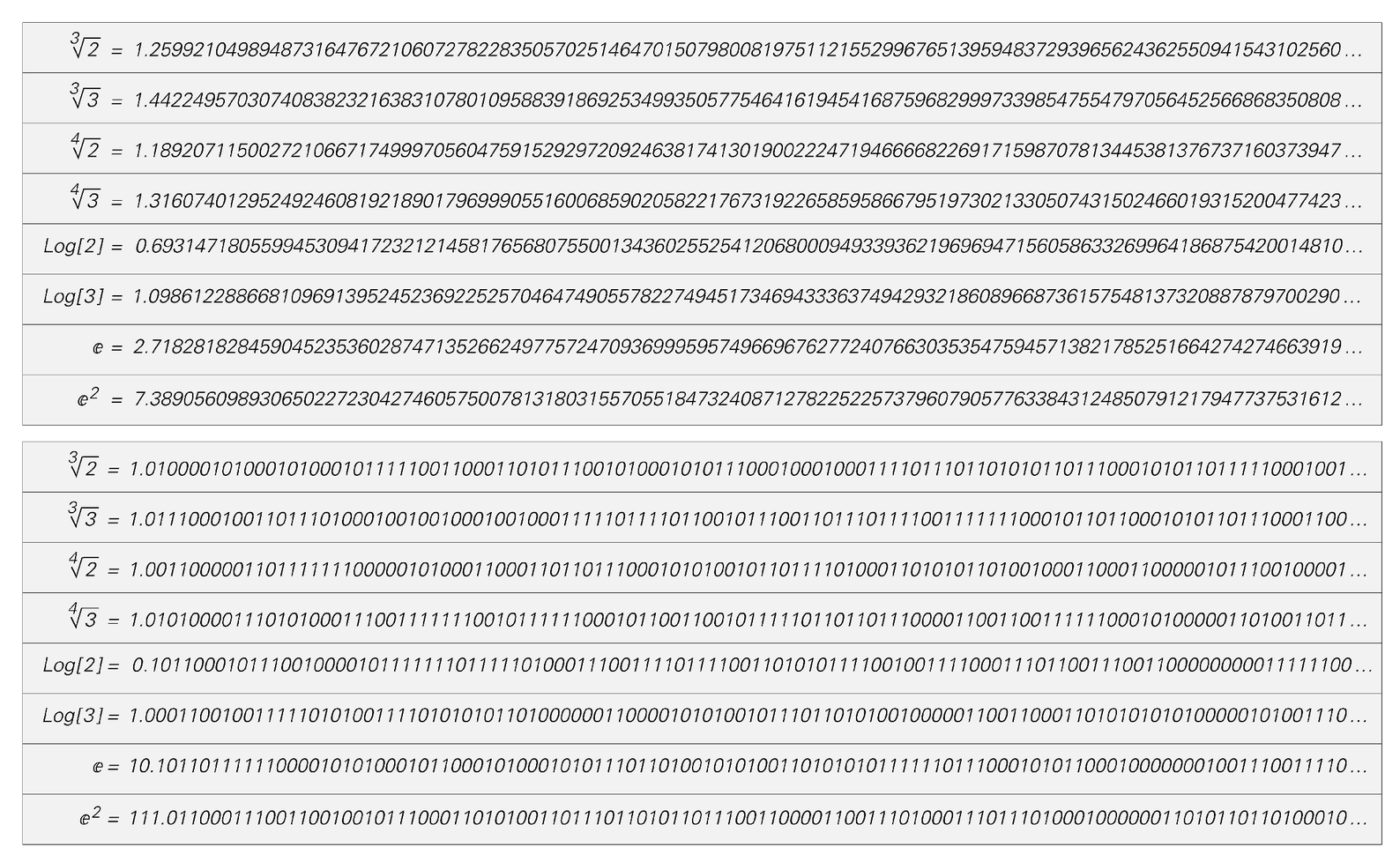ever occur. It is straightforward to construct a nested digit sequence using for example the substitution systems on page 83, but the point is that such a digit sequence never corresponds to a number that can be obtained by the mathematical operation of taking roots.
So far in this chapter we have always used digit sequences as our way of representing numbers. But one might imagine that perhaps this representation is somehow perverse, and that if we were just to choose another one, then numbers generated by simple mathematical operations would no longer seem complex.
Any representation for a number can in a sense be thought of as specifying a procedure for constructing that number. Thus, for example, the pictures at the top of the facing page show how the base 10 and base 2 digit sequence representations of π can be used to construct the number π.

Digit sequences for cube roots, fourth roots, logarithms and exponentials, given at the top in base 10 and the bottom in base 2. Once again, these sequences seem for practical purposes random.



